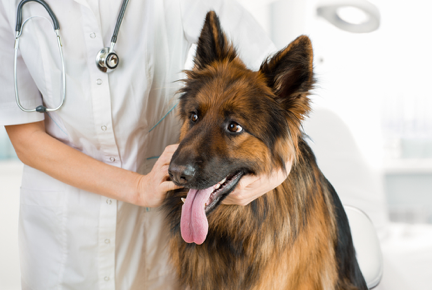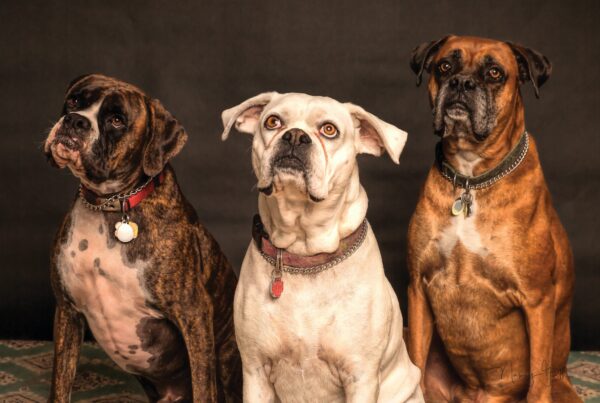Most of us would love to welcome a large breed dog in our families. Their majestic size, playfulness, and gentle attitude are qualities many dog owners simply adore.
However, keeping a large breed dog brings its own set of challenges. One is the common health problems faced by the gentle giants. Larger breeds are typically more prone to certain health conditions. This article will be helpful in knowing more about these potential risks.
Dysplasia
Dysplasia is a congenital condition of joints that frequently affects large breeds. It can affect the joints in two places- the hip and the elbow joint.
Hip Dysplasia
According to a study, this disorder can occur in more than half of the large breed pups out there. Pretty shocking right? The condition is caused due to lack of alignment in the hip joint and socket. The root cause if not clear though. Poor genetic health is often blamed.
Typical symptoms are reduced activity level, increasing pain in the hip etc. Dogs suffering from this issue might also avoid running or climbing.
By exercising your pup adequately, you can keep him fit and avoid this condition from developing. Adults often need a complicated procedure to replace the hip. Especially if the condition is too advanced.
Elbow Dysplasia
Very similar to hip dysplasia, this variant of the condition occurs in the elbow joint. Surgery is recommended in extreme cases. Like hip dysplasia, genetics also plays a key factor in causing this problem.
Entropion
This is a genetic condition that affects the eyes. Though smaller breeds can develop this condition, it’s more common in the larger breeds.
The eyelid of the dog is displaced towards the orbit. As a result, there is an excessive irritation. The affected eye becomes red and teary. To relieve the pain, the dog often scratches on the eyes- further hurting the sensitive organ.
A vet can provide proper guidelines for treating this painful condition. Usually, entropion surgery is a common treatment option. Statistically, the recovery rate of the surgery is quite satisfactory.
Cherry Eye
This eye condition frequently occurs in mastiffs. The third eyelid is displaced outside the eye in this condition. If kept unattended, swelling might occur in that location.
This can lead to other infections and deteriorate eye conditions. It is wise to treat this condition as early as possible. If done so, surgery won’t be required to fix the eye.
Panosteitis
This disease is also known as Pano, and quite common in growing large breed dogs. Their leg bones of the dog become inflamed. The symptoms include weakness while walking and increased pain in the legs.
Why this condition affects dogs? Some experts say that it is the high growth food given to large breed puppies.
Always provide your pup with a balanced diet based on his age and breed. A vet will be able to give you a proper diet plan for your pup.
Gastric Dilatation-Volvulus
Gastric Dilatation-Volvulus is most commonly known as gastric torsion or bloating in dogs. Large breed dogs usually have large and deep chests. These dogs have a tendency to develop gastric torsion due to this.
Bloating is characterized by two steps- the gathering of excess gas in the stomach and the twisting of intestines. The blood flow is reduced in the second stage. It becomes deadly at this stage.
Always know about the risks of gastric torsion if you have a large dog with a deep chest. Try to prevent him from overeating or eating too quickly.
Dilated Cardiomyopathy
Known as a critical heart condition – this disease has no cure. A dog suffering from dilated cardiomyopathy will need close observation and medicine as long as they are alive. In the end, they will lose their life due to heart failure.
Early symptoms include reduced activity and noise from the heart. Dog breeders are trying their best to remove this disease from certain dog genes.
Aortic Stenosis
Aortic stenosis is another heart disease more commonly seen in giant breed dogs. It occurs when the valves and arteries around the heart become narrow resulting in a reduced blood flow.
Primary symptoms include breathing difficulties, exercise avoidance etc. Vets often suggest that dogs having this problem should not exercise for long hours- especially in high temperatures. Keeping a dog fit and slim is also another way to prevent this disease from developing.
Spondylolisthesis
Another name for this vertebral condition is Wobblers. Very common in a few large breeds, this disease is genetically inherited.
This disease affects the cervical vertebrae. As a result, symptoms like weakness and walking problems arise. The condition slowly worsens with time. At one point, the pooch might lose its ability to walk. Medication and surgery are two options for treating this disease.
Cruciate Ligament Tears
Large breed pups are obviously heavier and less agile. They are more prone to trauma like cruciate ligament tears. These tears can be caused by injuries from jumps, turns or other sudden activities.
Don’t over exercise your buddy. Keep them at a healthy weight. Also train him adequately before he competes in any dog sports.
Osteoarthritis
There can be multiple causes behind osteoarthritis- a joint disease. Common in large dog breeds, it can be caused by cancer, injury and even age. Large dog breeds are more prone to developing it due to their weight.
The degeneration of joint cartilage leads to sharp pain occurs during osteoarthritis. As the disease progresses, there are chances of bony growths developing in the joints.
The vet can prescribe drugs for arthritis. In more serious cases, surgery or even amputation might be required. It’s always best to adopt a prevention policy for this condition- keeping your pooch fit and at a healthy weight.
Some Final Words (H2)
A healthy lifestyle and regular vet checkups will keep your large pup happy and fit. Don’t hesitate to contact a vet if you sense something serious.
If you have a large breed puppy, he’ll need healthy puppy food from an early age. By giving him proper nutrition and exercise opportunities, you can reduce the health risks to a considerable extent.
Author Bio:
Shawn is a content writer at FeedFond. He’s a doting father not only to his two children but also to his two Golden Retrievers. Check out more of his articles at FeedFond.com.




